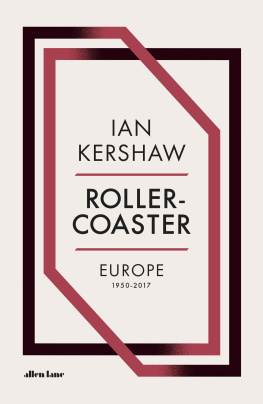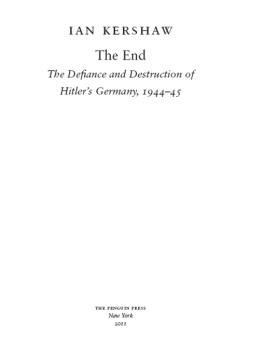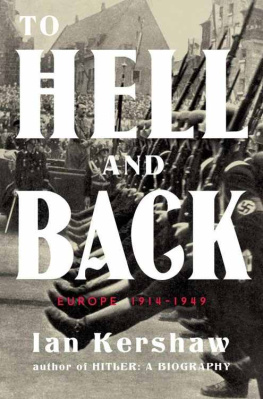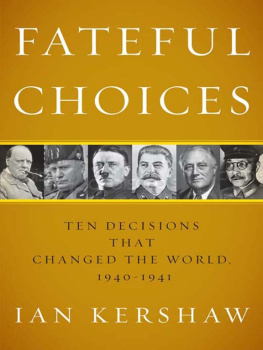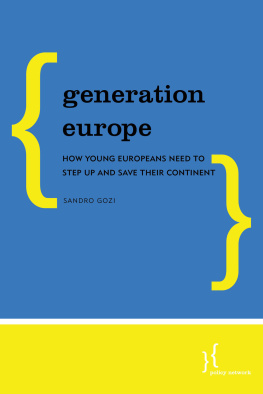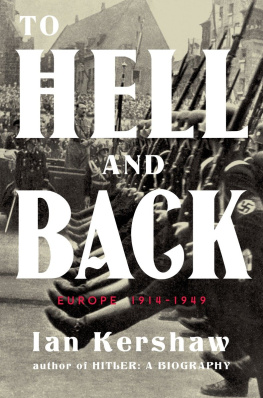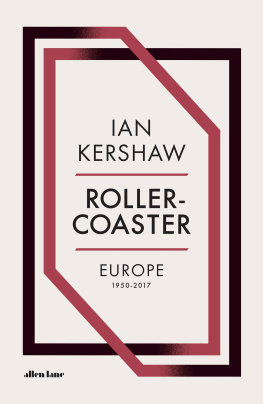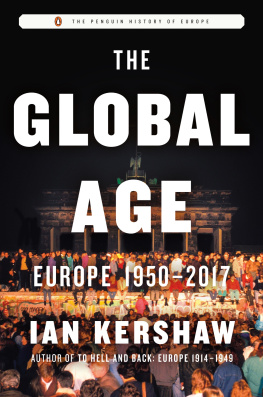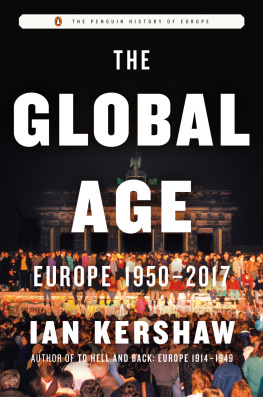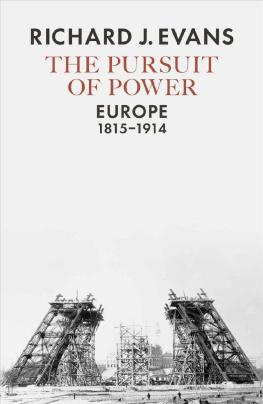

Ian Kershaw
ROLLER-COASTER
Europe, 19502017

Contents
THE PENGUIN HISTORY OF EUROPE
General Editor: David Cannadine
I. SIMON PRICE AND PETER THONEMANN: The Birth of Classical Europe: A History from Troy to Augustine
II. CHRIS WICKHAM: The Inheritance of Rome: A History of Europe from 400 to 1000
III. WILLIAM JORDAN: Europe in the High Middle Ages
IV. ANTHONY GRAFTON: Renaissance Europe
V. MARK GREENGRASS: Christendom Destroyed: Europe 15171648
VI. TIM BLANNING: The Pursuit of Glory: Europe 16481815
VII: RICHARD J. EVANS: The Pursuit of Power: Europe 18151914
VIII. IAN KERSHAW: To Hell and Back: Europe 19141949
IX. IAN KERSHAW: Roller-Coaster: Europe 19502017
already published
List of Illustrations
. Checkpoint Charlie, Berlin, 1953 (PhotoQuest/Getty Images)
. Konrad Adenanauer and Robert Schuman, 1951 (AFP/Getty Images)
. Crowds at Stalins funeral, 1953 (Keystone-France/Gamma-Keystone via Getty Images)
. President Tito and Nikita Khrushchev in Belgade, 1963 (Keystone/Hulton Archive/Getty Images)
. Soviet tank destroyed in the Hungarian uprising of 1956 (Sovfoto/UIG/Getty Images)
. Algerian Harkis arriving in France, 1962 (STF/AFP/Getty Images)
. Simone de Beauvoir and Jean-Paul Sartre in Rome, 1963 (Keystone-France/Gamma-Keystone via Getty Images)
. Little Richard on tour in Germany, 1962 (Siegfried Loch K & K/Getty Images)
. Carnaby Street, London (Jean-Philippe Charbonnier/Gamma-Rapho/Getty Images)
. Citron showroom, Paris (Charles Edridge/Getty Images)
. Students and police in Paris, May 1968 (Hulton-Deutsch/Corbis via Getty Images)
. Leonid Brezhnev and Alexander Dubek in Bratislava, 1968 (Keystone-France/Gamma-Keystone via Getty Images)
. Invasion of Czechoslovakia, 1968 (Popperfoto/Getty Images)
. Willy Brandt in Warsaw, 1970 (Bettmann/Getty Images)
. Swiss anti-womens vote poster, 1971 (Swiss National Museum, Zrich)
. Turks in Duisburg, 1980 (Henning Christoph/Ullstein Bild via Getty Images)
. IRA bombing in Belfast, 1972 (Bettmann/Getty Images)
. Pope John Paul II in Warsaw, 1979 (Bettmann/Getty Images)
. LechWasa at the Gdansk shipyard, 1980 (Jean-Louis Atlan/Sygma via Getty Images)
. Franois Mitterrand and Helmut Kohl, 1984 (Rgis Bossu/Sygma via Getty Images)
. Margaret Thatcher and Mikhail Gorbachev in Moscow, 1987 (Georges De Keerle/Hulton Archive/Getty Images)
. Leipzig demonstration, 1989 (Georges Merillon/Gamma-Rapho via Getty Images)
. Romanian demonstrator, Bucharest, 1989 (Peter Turnley/Corbis/VCG via Getty Images)
. Anti-Maastricht placards, Provence, 1992 (Philippe Giraud/Sygma via Getty Images)
. Bombing of Sarajevo, 1992 (Georges Gobet/AFP/Getty Images)
. Boris Yeltsin and Vladimir Putin, 1999 (AFP/Getty Images)
. Aftermath of the Madrid train bombing, 2004 (Pool Almagro/Duclos/Vandeville/Gamma-Rapho via Getty Images)
. General strike in Athens, 2010 (Milos Bicanski/Getty Images)
. Pro-Europe demonstration in Ukraine, New Years Eve, 2013/14 (Sergei Supinsky/AFP/Getty Images)
. Turkish policeman with the body of Aylan Shenu, 2015 (Nilufer Demir/Dogan News Agency/AFP/Getty Images)
List of Maps
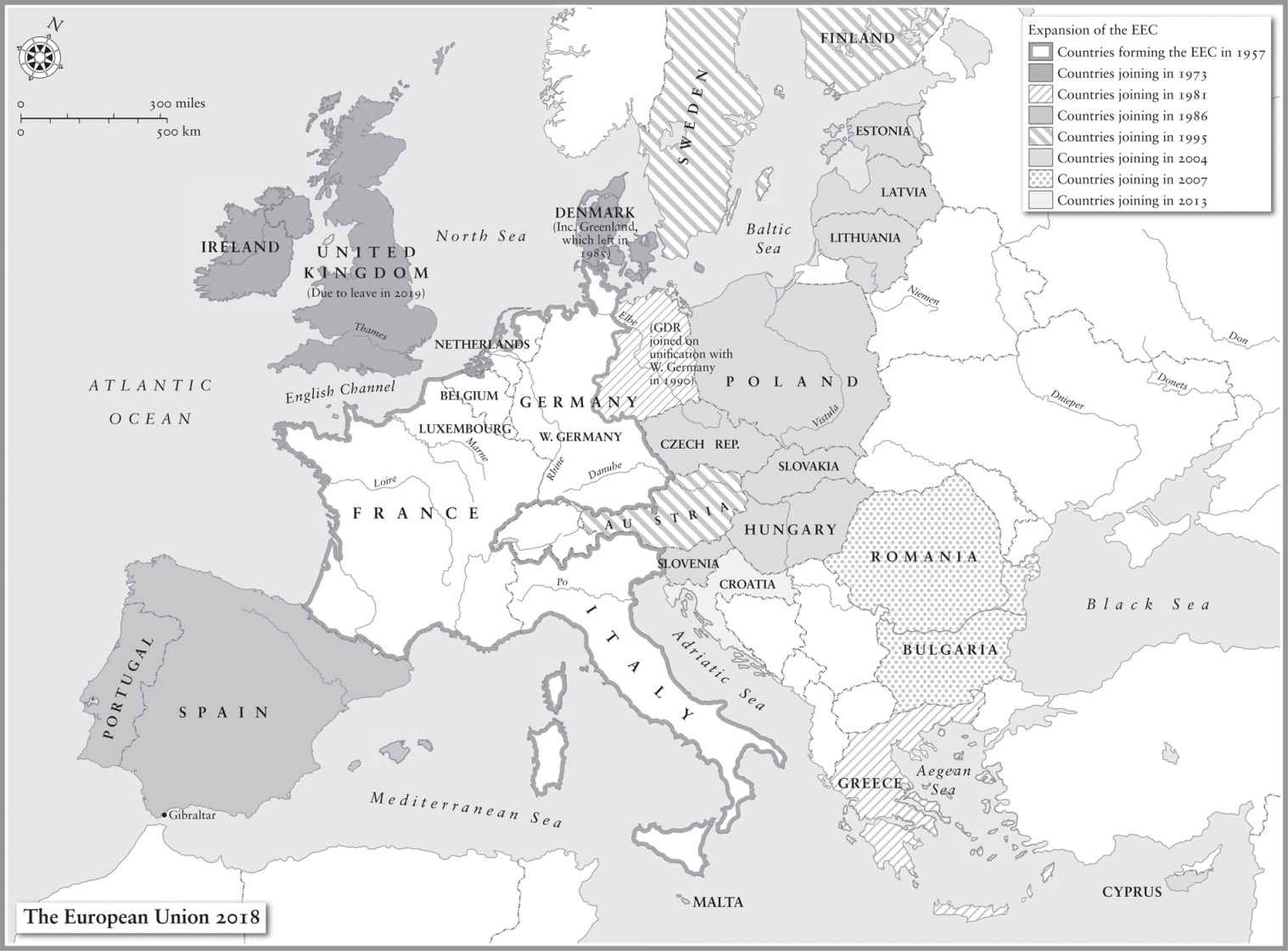
Preface
To Hell and Back, I wrote in the Preface, was the hardest book I had ever attempted. That was until this book. This second volume on the history of Europe from 1914 to our own times posed still greater problems in both interpretation and composition. This is in no small measure because Europes history between 1950 and the present day has no single overriding theme comparable to the obvious centrality of world war which dominates the predecessor volume that covers the period 1914 to 1949. To Hell and Back followed a linear progression in and out of war, then again, in and out of war. No straightforward linear development adequately describes the complexity of European history since 1950. This is rather a story of twists and turns, of ups and downs, of volatile shifts, of a great and accelerating speed of transformation. Europe since 1950 has been a roller-coaster ride, complete with thrills and scares. This book aims to show how and why it lurched during those decades from one era of great insecurity to another.
The metaphor of the roller-coaster is not perfect. After all, a roller-coaster, for all its thrills and excitement, runs along fixed lines in a circuit and ends at a known point. Perhaps, too, its fairground imagery sounds too trivial and light-hearted for the seriousness, weightiness and, indeed, often tragedy of Europes history since the war. But it does capture the unevenness, the breathtaking moments, and the experience of being swept along by uncontrollable forces that affected though in different ways practically all Europeans during these decades.
The complexity of Europes history in this era poses significant problems for the architecture of the book. These are compounded by the division of Europe for over forty years by the Iron Curtain. Other than as an idea of shared cultural identity (though one fragmented through religious, national, ethnic and class differences), Europe in these decades did not exist. Its two halves western and eastern Europe were themselves purely political constructs. The internal development of each half of the continent over that period is so different that it is impossible to integrate them in any coherent fashion until the fall of communism between 1989 and 1991. Although Eastern and Western Europe also thereafter remain profoundly different, the impact of rapidly accelerating globalization a key theme of the volume then makes it feasible to deal with them together, rather than separately.
The nature of such a wide-ranging work means, as in To Hell and Back, that I had to rely heavily upon the research and writing of others even more so, in fact, since I have never undertaken specialized research on any aspect of this period. Having lived through it is no substitute. Someone suggested to me as I was starting the writing that this book should be easy, since the period coincided with much of my lifetime. But living through history produces memories that can be distorting or inaccurate, as well as possibly helpful. In a tiny number of places I have added a personal recollection in a footnote. But I have kept them out of the text. Personal anecdote and historical evaluation are in my view best kept apart. Leaving aside the frailties of memory, most of what passes by on a daily basis has only ephemeral resonance. Assessment of the significance of major occurrences nearly always requires not just detailed knowledge but the passage of time in which to digest it.
Next page
